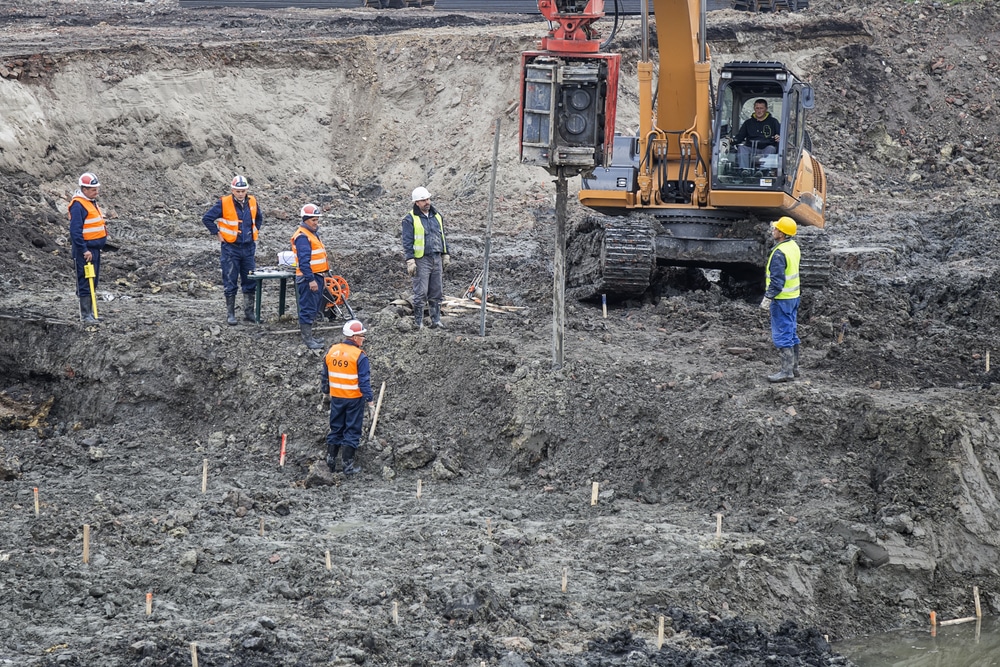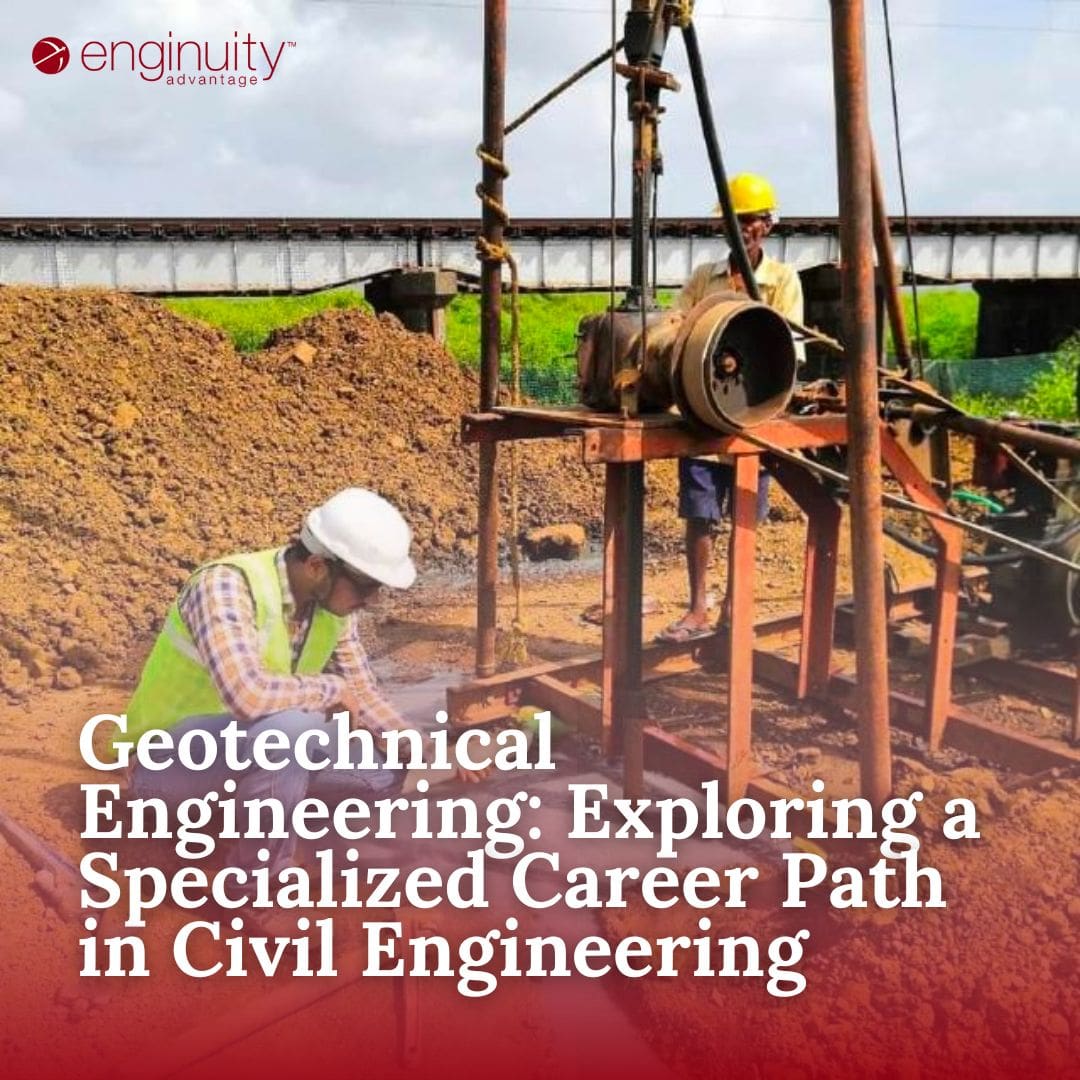Understanding the Vital Role of the Geotechnical Sector in Modern Building Projects and Infrastructure Advancement
The geotechnical sector is a keystone of modern-day building and construction and infrastructure development, supplying essential understandings right into dirt behavior that straight influence job end results. Via advanced dirt assessments and innovative engineering options, geotechnical professionals not just make certain structural integrity but additionally address sustainability problems amid developing environmental requirements.
Relevance of Dirt Analysis
Soil assessment plays a vital function in the geotechnical market, serving as the structure for educated decision-making in construction jobs. Accurate dirt analysis is crucial for identifying the suitability of a site for numerous kinds of frameworks, consisting of property homes, industrial buildings, and bridges. By analyzing dirt make-up, thickness, strength, and wetness web content, engineers can prepare for prospective obstacles and alleviate dangers related to ground instability, erosion, and settlement.
The analysis procedure normally entails a series of examinations and observations that offer essential information regarding the subsurface conditions. This information notifies the design and building and construction procedures, guaranteeing that structures are constructed on solid ground with sufficient assistance. Comprehending the dirt profile enables engineers to choose suitable building approaches and materials, enhancing source use and decreasing prices.
Along with making certain structural integrity, soil evaluation adds to ecological sustainability. By determining potential contamination or negative impacts on surrounding ecological communities, engineers can carry out strategies to safeguard these natural deposits. Generally, comprehensive dirt assessment is important in the geotechnical area, underpinning the safety and security, efficiency, and ecological duty of construction jobs.
Trick Geotechnical Strategies
A selection of key geotechnical methods are used to boost the stability and evaluate and performance of building sites. One foundational technique is dirt tasting and screening, which allows designers to figure out the chemical and physical buildings of the ground. This details is important for making educated decisions pertaining to structure style and building approaches.
An additional vital method is site characterization, which involves the comprehensive analysis of dirt and rock conditions through techniques such as borehole exploration and in-situ screening. Methods like Requirement Penetration Tests (SPT) and Cone Penetration Tests (CPT) give beneficial information on soil toughness and stratigraphy.
Ground renovation methods, such as dirt stablizing and grouting, are likewise important in improving the load-bearing ability of weak soils. These methods can minimize settlement and enhance overall website conditions.
Additionally, incline security evaluation is vital for determining potential landslide dangers and making sure the security of excavations. This evaluation commonly utilizes numerical modeling and limit stability methods to forecast soil behavior under numerous conditions.
Including these geotechnical techniques into building and construction planning not only enhances job end results however additionally guarantees the long-lasting sustainability of framework development.
Influence On Construction Security

Additionally, effective geotechnical click site design involves executing mitigation approaches for determined dangers. This might consist of dirt stabilization methods, preserving structures, or water drainage systems to alleviate hydrostatic pressure. By resolving these elements, building and construction groups can reduce the probability of crashes and enhance employee security.
In addition, continuous tracking of website problems is vital throughout building and construction. Geotechnical instruments can supply real-time data relating to ground activity and stability, permitting prompt treatments when necessary.
In essence, the geotechnical market plays an essential role in guarding building and construction projects. By prioritizing ground stability and using extensive evaluation approaches, the geotechnical field not just secures the workforce but likewise adds to the long life and dependability of built facilities.
Sustainability in Geotechnical Practices

Additionally, geotechnical designers are currently utilizing sophisticated innovations, such as geosynthetics, which improve soil security while lowering the quantity of product needed. This not only saves resources however likewise results in less waste generation (geo tech engineer). The assimilation of lasting style principles into geotechnical design motivates the usage of renewable resource resources in building and construction procedures, even more decreasing carbon discharges
Furthermore, extensive site assessments are essential for identifying potential ecological influences before construction starts. By carrying out these evaluations, geotechnical professionals can develop approaches that alleviate negative results, making certain compliance with ecological guidelines. On the whole, the emphasis on sustainability within geotechnical techniques not only contributes to the long life and durability of facilities however also advertises a responsible approach to land and source monitoring. This commitment is crucial for fostering lasting advancement in the modern building landscape.
Future Trends in Geotechnical Engineering
Innovation is driving the future of geotechnical engineering, as arising methodologies and innovations improve the sector. The combination of advanced information analytics and fabricated intelligence is readied to reinvent site examination like it and risk assessment, allowing designers to make even more informed decisions based on real-time data. The use of geosynthetic materials is getting traction, supplying lasting remedies that boost dirt security and reduce ecological influence - tailings engineer.
An additional significant trend is the fostering of automated and Click This Link robotic systems for monitoring and construction processes. These technologies not just boost accuracy but additionally improve safety by reducing human involvement in unsafe atmospheres. Additionally, the execution of Building Info Modeling (BIM) in geotechnical design facilitates boosted partnership amongst stakeholders, enhancing project shipment and decreasing expenses.
As environment modification postures brand-new difficulties, the sector is significantly concentrating on strength and adaptability in layout methods, ensuring facilities can withstand severe weather events. The continuous trend towards sustainability will drive innovation in green materials and techniques, straightening geotechnical design with more comprehensive environmental goals. Jointly, these fads will shape an extra effective, lasting, and resistant geotechnical landscape for future projects.
Final Thought

The geotechnical market is a foundation of modern construction and infrastructure advancement, offering vital insights right into dirt habits that directly affect task results. engineer of record.Dirt evaluation plays a vital role in the geotechnical sector, offering as the structure for notified decision-making in construction tasks. Generally, complete soil assessment is indispensable in the geotechnical field, underpinning the safety and security, effectiveness, and environmental duty of building projects
Building and construction safety and security is significantly affected by geotechnical methods, as the security and stability of the ground straight influence the general safety and security of a building and construction website.In conclusion, the geotechnical market is essential in modern-day building and framework growth, giving important assessments that make certain structural honesty and security.
Comments on “Engineer of Record: What You Need to Learn About Their Obligations and Impact”